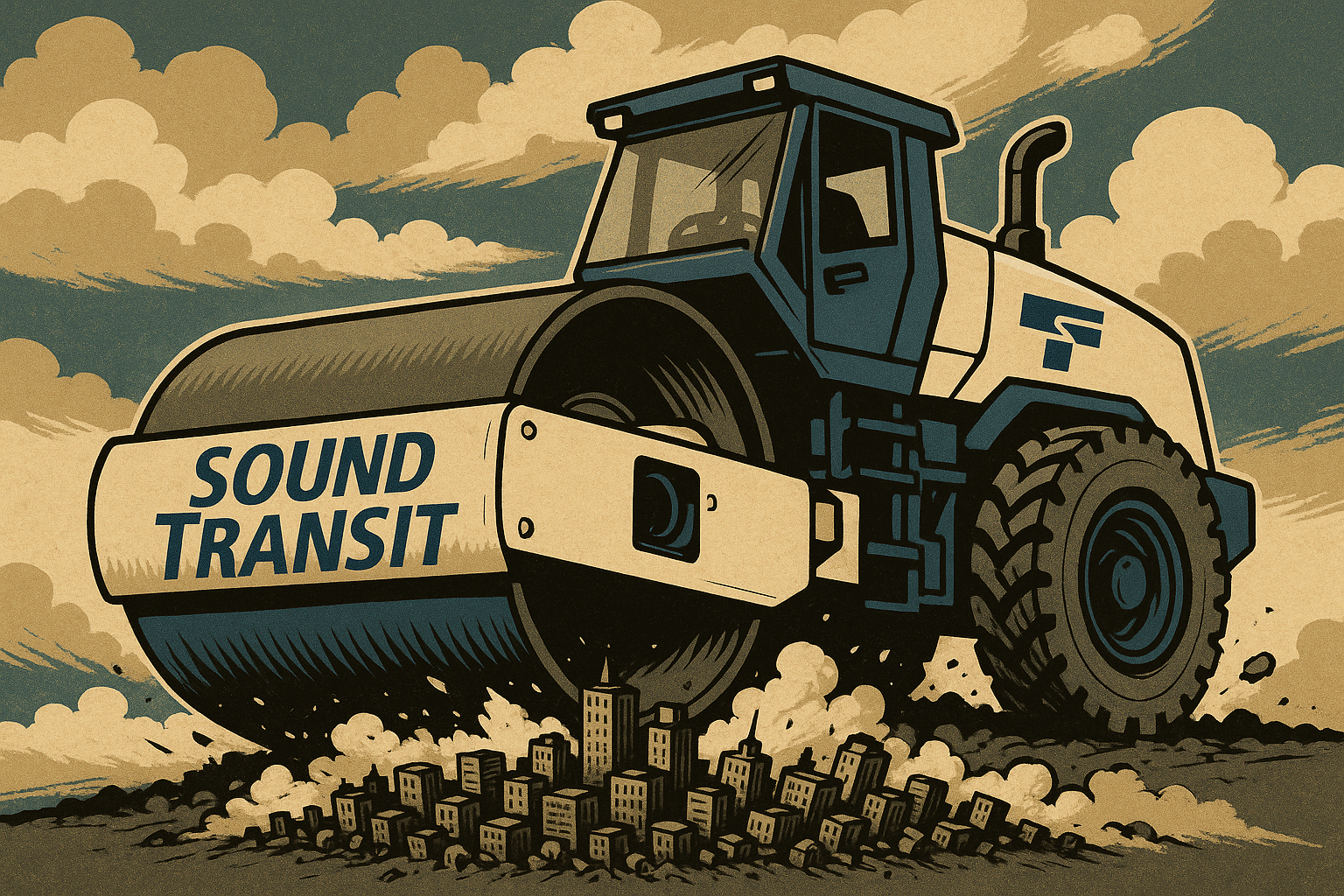Related Articles
Late last month, WPC submitted a column to the Spokesman-Review newspaper in Spokane regarding Spokane's Central City Alternatives Analysis project. Spokane Transit Authority CEO Susan Meyer has graciously clarified some of the points made in that column. Her thoughts are bolded below.
Chris Cargill: Efficiency should guide choice of downtown transit plan
The Spokesman-Review - April 24, 2011
If you were shopping for a new car, you probably would not buy one that slowed down your commute. You also would not want a car that didn’t handle well during Spokane’s snowy winter months. And once you found one, you certainly would not spend 10 times more money than you had to on it, would you?
That’s exactly the question Spokane taxpayers could face. For the past year, officials at the Spokane Transit Authority and the city of Spokane have been working on a “Central City Transportation Alternatives Analysis.” The proposal features one of three possible modes – a streetcar, an electric trolleybus or an enhanced bus line to connect activity centers in the downtown area.
The three options – which would run on a two-and-a-half- mile route from Browne’s Addition to Gonzaga University – are vastly different in what they could do and what they would cost. STA officials say they are looking for a system that is responsive, affordable and well-balanced. So it should be of great concern to taxpayers and local government officials if the cost-effective enhanced bus option, also known as bus rapid transit (BRT), is removed from the table. The Enhanced Bus Alternative has not been removed from consideration. The consultant recommended it be eliminated; an idea rejected by the Core Stakeholders. All three modes are staying on the table. None will be removed from consideration until a final Mode is selected.
What makes BRT better than the two others? Enhanced buses would be the least-expensive option – no small fact when you consider the economic situation the country is in. At a cost of $3?million to $5 million per mile, according to STA estimates, an entire system could be created in downtown Spokane for less than $10 million. Enhanced buses also offer the most flexibility and feasibility. Some estimates show travel times and ridership can rival the performance of some light rail systems.
But city officials and the Spokane Transit Authority may soon concentrate their efforts on the more expensive and less flexible electric trolleybus or streetcar, or a system somewhere in between. There are just three mode alternatives--nothing ‘in-between’. The problem is those systems are neither affordable nor flexible or feasible. Affordability, flexibility and feasibility, it seems to me, are in the eye of the beholder.
According to the consulting firm drawing up plans for the STA, a streetcar system would cost roughly $100 million to build in downtown Spokane -10 times as much as BRT. It would likely increase the travel time from Browne’s Addition to Gonzaga University. Not correct. Because streetcars would be built on fixed tracks, they cannot keep pace with changing development or growth patterns and officials would have to build a second multimillion-dollar maintenance facility to service the cars. The vast majority of the alignment between Browne’s Addition and Gonzaga is already built out, but arguably not to its fullest potential. The cost of the maintenance facility is included in the per mile cost estimate. And streetcar systems have little experience in heavy snow climates, meaning service could be slowed or canceled in the winter. Generally speaking, a streetcar is more likely to be challenged by snow than other modes, but streetcars operated in Spokane for years. Two winters ago, Spokane received 100 inches of snow.
The electric trolleybus would cost roughly $30 million to build, and overhead power lines would add an unsightly tangle to streets in downtown Spokane. An overhead power system can be designed to fit better aesthetically in the urban environment than what one sees in Seattle or San Francisco. Those lines and the lanes in which the system would travel would have to be kept clear of ice and snow, a task in which Spokane often struggles. There have been no electric trolleybus systems installed in the United States from scratch. Spokane would be the first. Spokane would be the first to build a trolleybus system from scratch in 60 years. Other cities have converted their overhead electric systems from streetcar to electric trolleybus. The primary difference in Spokane would be that the vehicle would not look like a bus. The design of the vehicle would be the main feature unique to Spokane--more like a light rail or modern streetcar vehicle.
There are also concerns that other important performance criteria like projected ridership and annual operating costs have not been released and not considered yet. Hourly operating cost ranges of each mode have been presented to the Sounding Board. Ridership projections have been estimated but have not yet been finalized.
In 2009, STA buses carried more than 11 million people for an average cost of $3.72 per passenger trip. That ranks third most efficient among transit agencies in our state. Cost efficiency is measured by passengers per revenue hour (P/RH). STA has the second highest number of P/RH among urban systems, second only to King County Metro. Cost effectiveness is measured by cost per revenue hour (C/RH). STA has the lowest C/RH of any urban system in the State.
Streetcar systems in other cities show that costs would be much higher ($5.25 per passenger trip in Seattle) while not providing any additional ridership advantages over buses. One of the primary cost drivers, pardon the pun, is labor. STA’s labor costs are significantly lower than those in the Puget Sound. Initially, a new downtown system could operate up to 18 hours per day. STA’s busiest bus routes are on Division and Sprague. The proposed alternative follows neither. Division and Sprague already enjoy high frequency bus service. There is not currently a single bus route that covers the entire Central City alignment.
Many of these concerns were brought up by a Sounding Board – a group of citizens, including the Washington Policy Center, who have been offering broad input on the proposal.
STA officials should be congratulated for managing one of the most efficient transit agencies in the state. By every measure, buses are cheaper, serve the same number of riders and are more flexible than a costly fixed guideway system like streetcars and electric trolleybuses.
The STA and city of Spokane should continue their successful record by choosing a transit system, like BRT, that improves service to the public, not one that makes it worse.
Chris Cargill is the Eastern Washington director for the Washington Policy Center (www.washingtonpolicy.org), a nonprofit research organization with offices in Spokane, Tri-Cities, Seattle and Olympia.



